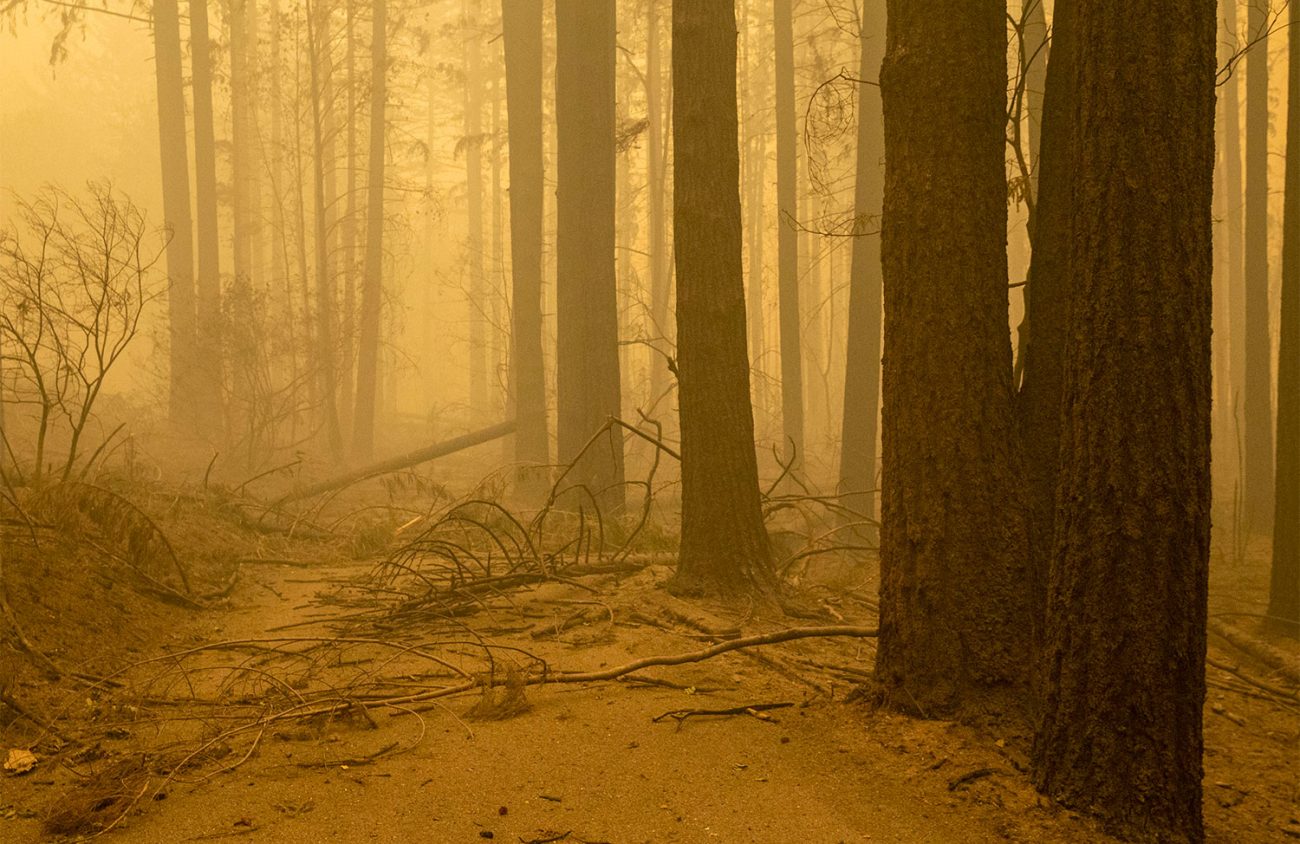The Holiday Farm Fire has been mostly contained since October, but the Bureau of Land Management is now proposing salvage harvesting, a controversial forest management practice where trees affected by natural disaster are logged.
The BLM is proposing more than 1,500 acres in salvage timber sales on the McKenzie watershed and could bypass environmental assessments because the Trump administration has expanded the use of categorical exclusions, which allow federal agencies to move faster on salvage harvesting. But the BLM says environmental impacts are still considered in this rule and selling affected trees would mean fewer living trees cut down this year.
Environmental groups say the BLM needs more transparency on the sale and that salvage logging kills natural recovery cycles in old growth forests, which are necessary to tackle climate change, and threatens the McKenzie watershed, Eugene’s only water supply.
“The BLM does not move fast as a general rule,” Wildlands Director Rebecca White of Cascadia Wildlands says about the salvage timber sales. “But they’re moving like wildfire.”
In November, the BLM announced three salvage logging actions related to the Holiday Farm Fire aftermath: Wild and Wooly (58 acres), Mid Indian (116 acres) and HLB-MITA (1,345 acres). Eugene BLM field manager Becca Brooke says she approved the first two projects through a categorical exclusion.
The three salvage sales are a part of a larger regional strategy to maximize logging of the burn areas. On Nov. 25, BLM State Director Barry Bushue sent a memo to BLM offices in the region with a strategy to recover timber from the historic 2020 wildfires. Bushue’s memo called for maximizing salvage timber volume at an urgent pace to offer as much as possible in the current year. Bushue called for a planned target of 278 million board feet.
Brooke says the BLM is required by law to sell that much timber, and the memo emphasizes collecting the dead and dying trees over living trees. She adds that decisions have to move quickly before dead and dying trees become a part of the habitat.
Brooke says the BLM isn’t moving abnormally fast on this project and that she’s even extended the deadline a week after the agency’s website had a glitch. She adds she can’t offer tours of the proposed sales because the area is still unsafe.
White says the BLM hasn’t provided enough information, so she’s asking the public to submit comments on the project to get more details about how big the trees are that were burned and if they really are dead.
“We’re asking people to let the BLM know if they think it should go for a full, careful environmental review and not be rushed under a Trump categorical exclusion,” White says. “Salvage logging is probably the most environmentally destructive form of logging, especially how they’re doing it, which is likely a clear cut.”
Three years after President Donald Trump signed an executive order to accelerate the federal environmental review process, the BLM can move forward with salvage logging projects without adhering to the 50-year-old law called National Environmental Policy Act (NEPA). In a Dec. 11, 2020, memo, the Office of Environmental Policy and Compliance’s Director Stephen Tryon approved the use of categorical exclusions on salvage logging projects of up to 3,000 acres without an environmental review.
In the memo, Tryon writes that among other things, salvage harvest can help recover economic value from timber and accelerate reestablishment of native resilient forest tree species.
White of Cascadia Wildlands says categorical exclusions have been used in the past for small projects, such as bathrooms at a campground. Using it for logging up to 3,000 salvage acres of a fire area is a big expansion of the rule, she adds.
And there could be lasting consequences on the McKenzie River, Eugene’s drinking water source, if the logging moves forward, according to Oregon Wild conservation and restoration coordinator Doug Heiken. “Salvaging logging is way worse than regular clearcutting because the soil is already very damaged,” he says. “There’s no vegetation to act as a natural filter for the sediment that might move into the drinking supply.”
Heiken says logging activity can cause ground movement from falling trees bouncing on the ground and heavy equipment operating. That causes an erosion of dirt, which becomes an issue, he adds. And if the Willamette Valley has a storm similar to the 1996 flood, he says, it could impact the drinking supply.
But Brooke says there won’t be a negative impact on the river, and she sent a notice to the McKenzie Watershed Council, a group of 28 organizations that represent the watershed, including EWEB. EWEB confirms the BLM notified them of the proposed sales.
Brooke says she decides which salvage projects get a categorical exclusion. It’s still reviewed by in-house BLM specialists with graduate degrees and years of experience, she adds. She says it’s too early to say whether she’ll do a categorical exclusion. If there’s an extraordinary impact, she says she’ll proceed with an environmental assessment.
Heiken says wildfire-affected trees are important for growing a natural forest. “The complex, diverse forest that grows naturally after these events are more resilient to climate change than a tree farm that is densely packed and uniform and monoculture,” he says. “It’s going to take 80 to 100 years to grow that forest naturally. If you try to do it with a tree farm, it would take 180 or 200 years.”
To provide comments to the BLM, email BLM_OR_NO_UPW_SalvageHarvest@blm.gov by Jan. 11, 2021.
Help keep truly independent
local news alive!
As the year wraps up, we’re reminded — again — that independent local news doesn’t just magically appear. It exists because this community insists on having a watchdog, a megaphone and occasionally a thorn in someone’s side.
Over the past two years, you helped us regroup and get back to doing what we do best: reporting with heart, backbone, and zero corporate nonsense.
If you want to keep Eugene Weekly free and fearless… this is the moment.
